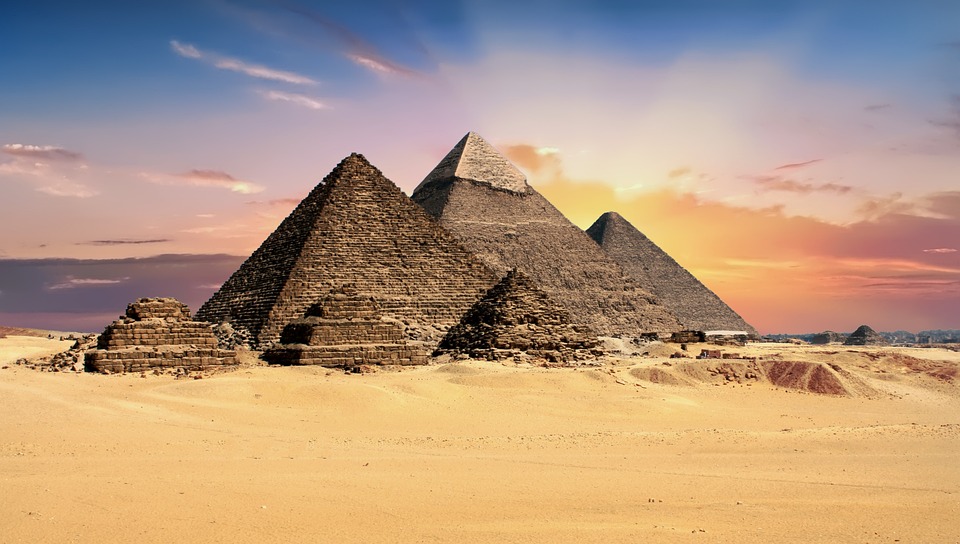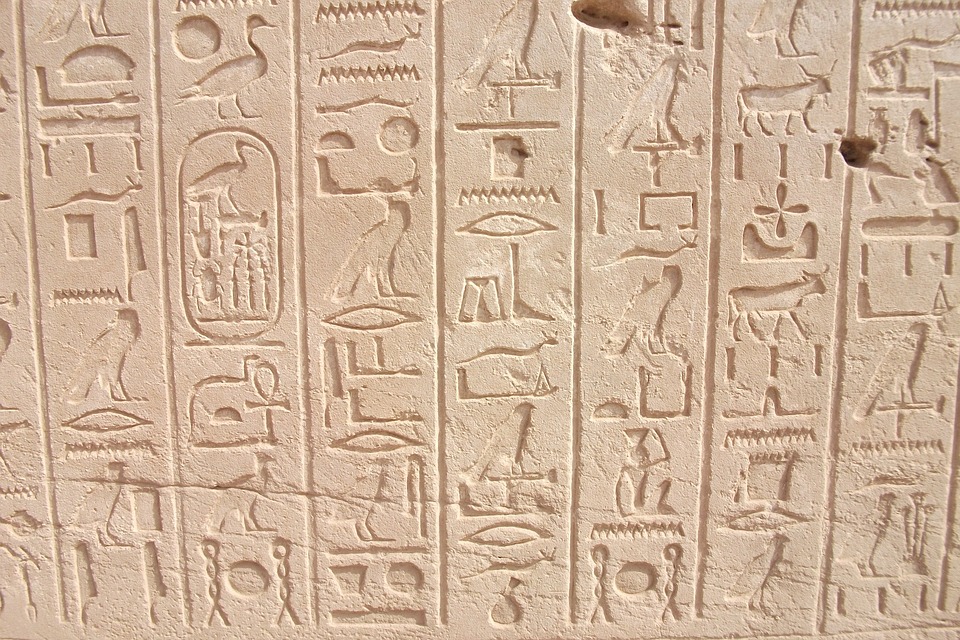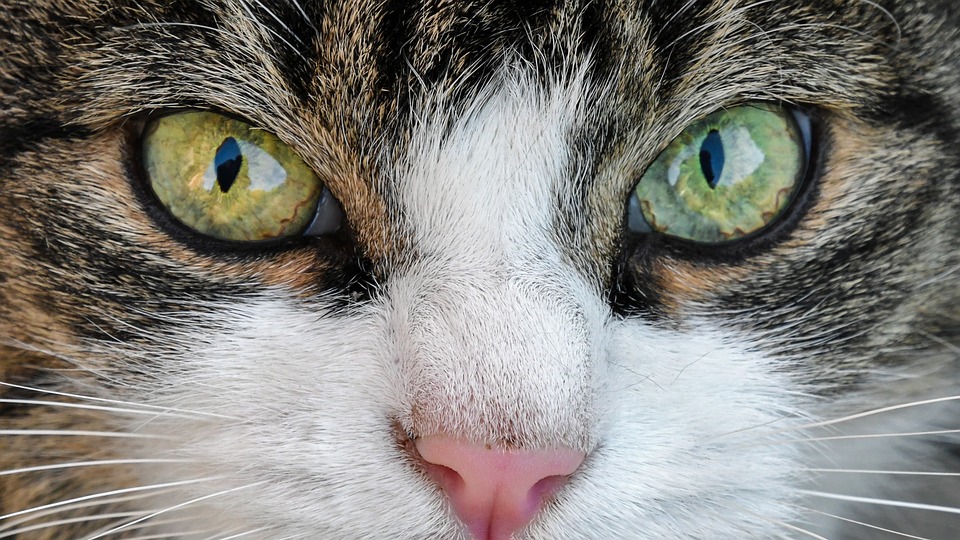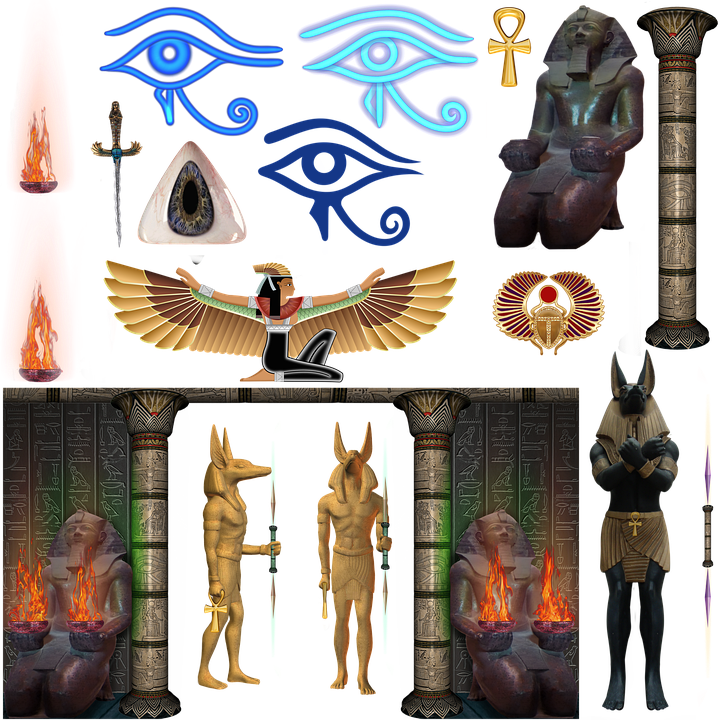Ancient Egypt – Ancient Egyptian Life and Culture
Ancient Egypt and ancient Egyptian people
Ancient Egypt, one of the world’s most iconic civilizations, flourished for over 3,000 years along the banks of the Nile River. Spanning from around 3100 BCE to 30 BCE, this remarkable civilization left a lasting legacy in various fields, including architecture, religion, art, and governance.
Ancient Egyptian society was highly organized and centralized, with a well-defined social structure. At the top of the hierarchy stood the pharaoh, considered both a political leader and a divine figure. The pharaohs ruled as god-kings, responsible for maintaining order and ensuring the prosperity of the kingdom. Religion played a central role in everyday life, and the ancient Egyptians worshiped a vast pantheon of gods and goddesses.
The construction of monumental structures is perhaps the most enduring symbol of Ancient Egypt. The pyramids, such as the Great Pyramid of Giza, were built as tombs for the pharaohs, reflecting their belief in the afterlife and the preservation of the soul. These massive structures stand as a testament to the advanced engineering and architectural skills of the ancient Egyptians.
In addition to the pyramids, the ancient Egyptians also left behind awe-inspiring temples, such as the Temple of Karnak and the Temple of Luxor. These temples were not only places of worship but also served as centers of economic and administrative activities.
The art of Ancient Egypt is renowned for its striking style and symbolic representation. The walls of temples and tombs were adorned with intricate paintings and hieroglyphic inscriptions, depicting scenes from daily life, religious rituals, and mythology.
The ancient Egyptians made significant contributions to various fields, including medicine, mathematics, and astronomy. Their knowledge of anatomy and medical treatments was advanced for its time, and they developed effective methods for mummification.
Understanding of the people and life during the ancient Egypt
In order to gain a full understanding of the people and life during the ancient Egypt, archeologists have been looking into different sources. The archeologists have found the sources that are the most valuable are the reliefs, tomb paintings and objects that could found in the tombs. These objects are what the ancient Egyptians used in their daily life. The documents that the ancient Egyptians composed are shedding some additional light on the people and life during the ancient Egyptian times. However, remaining obscure is the day-to-day running of the Egyptian households.
What archeologists have discovered is the father was the one responsible for providing for the family. The mother is the one who watched the household and cared for the children. The Egyptian children did have toys and liked to play, but most of the children spent their time preparing themselves for adulthood. As an example, the peasant children spent a lot of their time with the parents working in the field; privileged children would often get a good formal education in order to be army officers or scribes.

Ancient Egyptians did have furniture, but it was a simple design. The most common furniture the ancient Egyptians used was a low stool. All of the ancient Egyptians used this low stool, even the pharaoh. The stools were nothing special in today‘s world, they were made out of wood and had woven rush or leather seats. Most of the kitchens had cylindrical, backed clay stove. In the ancient Egyptian ages, they stored their food in wheel-made pottery. The basic cooking equipment the Egyptians used was a saucepan pottery that had two handles.
When looking at pictures of both men and women during the ancient Egyptian ages, you see both the men and the women are wearing jewelry. The jewelry consists of bracelets, anklets, earrings, beaded necklaces and anklets. One cannot fully describe what they looked like wearing this jewelry, but one word would be beautiful. The Ancient Egyptians had superstitions; therefore, their jewelry had amulets, which were good luck charms.
Facts about Ancient Egypt
1. The pyramids of Ancient Egypt were built to serve as tombs for the dead pharaohs, who were the rulers of Ancient Egypt, as well as their family. Archeologists have been able to uncover more than 130 different pyramids.
2. Ancient Egyptians believed that the afterlife was extremely important. In order for a person‘s soul to live forever in the after-life, their body must be preserved. The Ancient Egyptians used a process known as mummification in order to preserve bodies.
3. The largest Egyptian pyramid is the Pyramid of Khufu in Giza, which has a structure that weighs as much as 16 Empire State buildings.
4. Makeup was believed to have magical healing powers, and also was used to protect their faces from the sun. It was worn by both men and women, and the most common eye-paint was green, which was made from copper, or black, and was made from lead.
5. When unwrapped, the bandages used to wrap an Ancient Egyptian mummy would stretch for more than 1.6 kilometers.
6. The Ancient Egyptian alphabet contains more than 700 different hieroglyphs.
7. The Ancient Egyptians believed in more than 2,000 deities, and had a God for almost everything, from surviving dangers to completing chores. Each god had a different responsibility in Egyptian, and needed to be worshipped in order for life to be kept in balance.
8. Cats were one of the most revered animals in the Ancient Egyptian culture, and were thought to bring a household good luck if they were kept at pets.
9. Board games were just as popular in Ancient Egypt as they are today. The most popular game was called “Senet”, and was played for more than 2,000 years. In Senet, players threw sticks much like we throw dice in order to move their pieces across the board.
10. The Ancient Egyptians were ingenious inventors, and created many things that we use today, including paper, pens, locks, keys, and even toothpaste.

Ancient Egypt: Gods and Goddesses
There were over 2,000 different and unique Gods and Goddesses in Ancient Egypt. Almost every location and situation had its own special deity. While most of the Gods began as local deities, over time they were merged and organized into what have been called Triads, groups of three, or Enneads, groups of nine. In order to make sense of these numerous deities, there were a variety of schools of theological thought, each one believing that they were superior to the others.
A ruling dynasty would typically promote their own religious beliefs, and promote their locations ruling God to the Chief National God. For example, Amun was the God of Thebes, and did not become a major deity until power shifted to Thebes in the Middle Kingdom.
Because there are so many different Gods and Goddesses, they often begin to share characteristics and other titles in different points in Ancient Egyptian history. One example of this is the God Sekhmet, who is the lion Goddess of Memphis, as well as Mut, Tefnut, and Hathor have all been called “the Eye of Ra”, and were supposed to protect the sun God Ra. Similarly, there are several different understandings of who the God Horus was.
Some points in time he is the consort of Hathor, and in others he was the son of Isis and Osiris. Considering that Ancient Egyptian civilization survived for more than 3,000 years, it is to be expected that their religious beliefs evolved during that time. Spanien.
Before there were dynasties to rule the kingdom, religion was typically animalistic, which meant that they considered certain animals, plants, and locations to be the homes of spirits. Because of this, many Gods are represented by totemic animals based on the understandings the Ancients had of that animal. An example would be the jackal, who represented the God Anubis.
Jackals were often seen on the edge of the desert, where many Egyptians were buried, and were thought to be the protectors of the souls of the dead. Likewise, the God Anubis, who took the form of a jackal, was associated with the dead and funerals.
Because the Egyptians were dependent on the flooding of the Nile for their economy and agriculture, they also worshipped many water and agricultural deities such as Hapi, Aunket, and Osiris. With the continued growth and development of their civilization, the Gods became more human like, and grew in number. Soon after followed several cosmological deities such as the sun and the moon, as well as Gods of war and hunting.
During the Atenist heresy during the Armarna period, Akehenaten rejected the old Gods in favour of what was known as the Aten disk. While this has been considered Ancient Egypt‘s “monotheistic” period, they were not fully monotheistic. Akenhaten himself still worshipped the cult of the Apis bull, as well as representations of Bes the God of childbirth. To further distance this period from monotheism as we understand it, Akenhaten and his wife Nerfertiti were often compared to the deities Shu and Tefnut.
Many years later, we can see that Christianity adopted, modified, and simplified many of the religious beliefs, symbols, and mythologies of ancient polytheistic religions, not least of all the beliefs of the Egyptians.

Ancient Egypt: Religion
Ancient Egyptian religion is classified as a polytheistic religion, which means that they worshipped many Gods rather than one God. They held a complex system of beliefs and rituals that became an integral part of Egyptian society overall. The foundation of their religious beliefs was their interaction with their Gods and Goddesses, who were believed to be not only present in all aspects of life, but in control of it as well.
Religious practices revolved around trying to gain the favor of the Gods, and thus ensuring success in all things. Formal religious practices would always revolve around the pharaoh, who was considered to be a God in his own right, and possessed divine powers as the ruler of the kingdom. His role as ruler was seen to be to act as the intermediary between the Gods and the people. He would organize all rituals and offerings to the Gods because he knew that they wanted in order to allow the universe to properly function. In this function the pharaoh would often allocate huge portions of the kingdom‘s resources to constructing temples to the Gods.
The pharaoh was not the only one who could interact with the Gods, however, as individual people often tried to interact with the Gods for their own purposes. They would appeal to the Gods through prayers and magic to compel the Gods to act in their favor. While these were closely linked to the more formal practices of the pharaoh, they were distinct in their own right. As the pharaoh‘s power and position began to decline, the power of this kind of populous religious and kenon tulokset tradition grew more prominent.
The after-life was an important aspect of Egyptian beliefs in all period of religious belief. Funeral practices were very detailed and specific, and must be followed accordingly if the deceased were to be able to enjoy the after-life. Proper funeral practices would ensure the survival of their souls. Massive tombs, offerings, and other grave goods were used in order to preserve the bodies and spirits of the dead.
Ancient Egyptian religious practices had its roots in Egypt‘s prehistory, and lasted for more than 3,000 years. Over this period of time, the details of the religion evolved with Egyptian civilization, with certain Gods rising and falling in importance, and the relationships between the Gods always changing and shifting. Gods like the sun god Ra, the creator god Amun, and the mother goddess Isis all became vitally important to Egyptians, and then fell in importance.
There was even a brief period in which the aberrant theology of Pharaoh Akehenaten replaced the traditional pantheon of Gods with a single god, the Aten. In all periods of Egyptian religion, its beliefs, practices, and mythologies were left behind in writings, monuments, and more. It also proved to be a significant influence on other ancient cultural beliefs, as well as many modern ones.
Ancient Egypt: Pyramids and Tombs
While there are numerous pyramid structures throughout the world, by far the famous are the ones in Egypt. Almost all Egyptian pyramids served as the tomb for both the Pharaoh as well as members of their family. To date, archeologists have been able to find around 130 different Egyptian pyramids. Archeologists believe that the first pyramid built in Egypt was the Pyramid of Djoser, which was built in 2640 BC in the city of Saqqara. It is over 4650 years old.
There are numerous burial grounds throughout Egypt, but one of the largest is Saqqara, which is located near Memphis. The Giza Necropolis is a set of three pyramids, and the largest is The Great Pyramid of Giza. The oldest Ancient Wonder of the World is the Pyramid of Khufu, and is the only one that is mostly intact. The Great Pyramid is Giza was the tallest structure in the world for more than 3,800 years. Even though the Great Pyramid of Giza has lost around 33 feet over the centuries, it still measures 480 feet high.
Other important Egyptian pyramids are Dashur, Abusir, Meidum, Lisht, and Abu Rawah. Almost every Egyptian pyramid can be found on the Nile‘s west bank. Egyptian pyramids have complex interiors, many times with numerous passages and chambers hidden within.
Before a body was placed in a tomb, it must go through the process of mummification, which preserved the body. In Egypt the dead were always buried with a range of goods that were meant to help them in the after life, including both luxury items and useful everyday goods.
Numerous royal tombs were targeted by tomb robbers, with many succeeding in breaking in. The most famous tomb that has been found in excellent condition is the tomb of Tutankhamun located in the Valley of Kings, which was rediscovered in 1922 by Howard Carter. It is the tomb that held the golden mask of Tutankhamun that is so well known today. Grekland.

What are cryptocurrencies?
Cryptocurrencies have revolutionized the financial landscape, introducing a decentralized form of digital currency that operates independently of traditional banking systems. Built on blockchain technology, cryptocurrencies like Bitcoin, Ethereum, and others offer a secure, transparent, and efficient way to transfer value across the globe.One of the key features of cryptocurrencies is their decentralization, meaning they are not controlled by any single entity, government, or financial institution. Instead, transactions are verified and recorded on a distributed ledger maintained by a network of nodes, ensuring transparency and security.
Check: Cryptocurrency rates and crypto prices in real time.
Cryptocurrencies have gained popularity not only as a means of financial transactions but also as investment assets. The volatile nature of the crypto market has attracted both seasoned investors seeking high returns and newcomers looking to capitalize on the potential gains.
Despite their growing acceptance, cryptocurrencies still face challenges, including regulatory scrutiny, scalability issues, and concerns about their environmental impact due to energy-intensive mining processes. However, ongoing developments in blockchain technology and increasing mainstream adoption continue to shape the future of cryptocurrencies, promising new opportunities and innovations in the financial world.
Links:
Wikipedia: Ancient Egypt
History Channel: Ancient Egypt
Live Science: Ancient Egypt
Ancient Egypt for Kids
British Museum: Ancient Egypt
